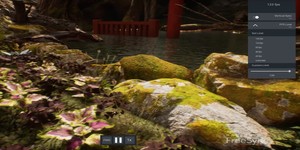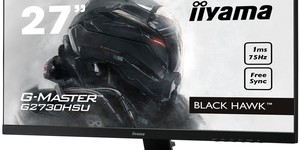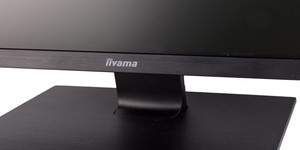
AMD has officially launched Radeon FreeSync 2, the latest revision of its dynamic refresh rate technology, and there's good news: If you have a FreeSync-compatible graphics card, it will automatically support FreeSync 2.
Launched to compete with Nvidia's G-Sync, FreeSync officially launched back in March 2015. When a FreeSync-capable graphics card is paired with a FreeSync-capable display, the technology - based on work AMD did to improve battery life on laptops - allows the refresh rate of the display to be matched to the content, within a set window. The result: Even when frame rates drop, the image appears smooth and doesn't tear as it would with a fixed-frame rate display.
'Gamers have spoken and they’ve made FreeSync the overwhelming choice and definitive industry standard for smooth, stutter-free gaming,' claimed Scott Herkelman, vice president and general manager of gaming at AMD's Radeon Technologies Group. 'Radeon FreeSync 2 technology is the first of its kind that combines HDR support with dynamic refresh rate technology, and does it in a seamless, plug-and-play manner that improves gaming quality automatically when the right content is present.'
The addition of support for high dynamic range (HDR) content is key to FreeSync 2, AMD has claimed. Where previously tone-mapping HDR content has been handled by the display hardware, under FreeSync 2 it's handled by the graphics processor instead - leading, AMD says, to a dramatic drop in latency. Naturally, FreeSync 2 also includes low frame rate compensation (LFC), the dynamic refresh rate technology that made the original FreeSync a success.
There is, of course, a catch to the new functionality: While existing graphics card supporting FreeSync will be upgraded in software to include FreeSync 2 support, getting the same functionality in the display requires new hardware. Existing FreeSync displays will continue to work as normal, AMD has explained, while the company is partnering with display manufacturers including Samsung to build FreeSync 2 certified TVs and monitors, which will, the company is keen to point out, include minimum standards for brightness and contrast ratios in order to ensure a minimum picture quality.
More information on FreeSync 2 is available from AMD's official website.
Launched to compete with Nvidia's G-Sync, FreeSync officially launched back in March 2015. When a FreeSync-capable graphics card is paired with a FreeSync-capable display, the technology - based on work AMD did to improve battery life on laptops - allows the refresh rate of the display to be matched to the content, within a set window. The result: Even when frame rates drop, the image appears smooth and doesn't tear as it would with a fixed-frame rate display.
'Gamers have spoken and they’ve made FreeSync the overwhelming choice and definitive industry standard for smooth, stutter-free gaming,' claimed Scott Herkelman, vice president and general manager of gaming at AMD's Radeon Technologies Group. 'Radeon FreeSync 2 technology is the first of its kind that combines HDR support with dynamic refresh rate technology, and does it in a seamless, plug-and-play manner that improves gaming quality automatically when the right content is present.'
The addition of support for high dynamic range (HDR) content is key to FreeSync 2, AMD has claimed. Where previously tone-mapping HDR content has been handled by the display hardware, under FreeSync 2 it's handled by the graphics processor instead - leading, AMD says, to a dramatic drop in latency. Naturally, FreeSync 2 also includes low frame rate compensation (LFC), the dynamic refresh rate technology that made the original FreeSync a success.
There is, of course, a catch to the new functionality: While existing graphics card supporting FreeSync will be upgraded in software to include FreeSync 2 support, getting the same functionality in the display requires new hardware. Existing FreeSync displays will continue to work as normal, AMD has explained, while the company is partnering with display manufacturers including Samsung to build FreeSync 2 certified TVs and monitors, which will, the company is keen to point out, include minimum standards for brightness and contrast ratios in order to ensure a minimum picture quality.
More information on FreeSync 2 is available from AMD's official website.

MSI MPG Velox 100R Chassis Review
October 14 2021 | 15:04








Want to comment? Please log in.